Existing User Log In
New User Registration
Register for a free account to gain full access to the VGChartz Network and join our thriving community.



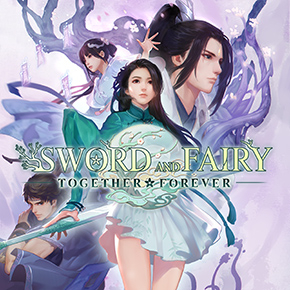

America - Front
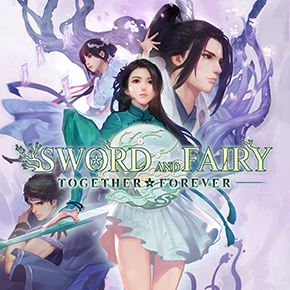

America - Back

Softstar
Role-Playing
 (Add Date)
(Add Date) (Add Date)
(Add Date) (Add Date)
(Add Date)
| Owners: | 0 |
| Favorite: | 0 |
| Tracked: | 0 |
| Wishlist: | 0 |
| Now Playing: | 0 |
The best part about not having expectations is when something exceeds any you could have possibly had. When I think of the phrase 'sword and fairy', the first thing that comes to mind is some indie derivative of The Legend of Zelda. What I don't think of is a 27-year-old franchise that's apparently capable of matching – if not flat out exceeding – almost every major JRPG series on the market today. With a great cast of characters, fantastic story, strong combat, an amazing soundtrack, and a compelling overworld to explore, Together Forever is an impressive production from top to bottom. My only concerns are the occasional translation error (which have largely been addressed) and its own ephemeral nature. As Winston Churchill once said to galvanize a nation: “I hope you're all wearing cheap socks, because they're about to be blown off.”
Xiu Wu, the herald of major deity Aoxu has failed his mission to assassinate the Demon King. Defeated and stripped of the Chunzi Sword (capable of slicing through the fabric of reality), Xiu Wu is banished to the Human Realm, further complicating an already convoluted situation. Inadvertently bound to Yue Qingshu, young heiress of the ailing Mingshu Sect, Xiu Wu maintains contact with Aoxu through the use of a divine medium who is in the possession of the rival Tianshi Sect. Immediately realizing that he and his master's long-standing presence in the mortal world is a direct violation of divine law, fish out of water Xiu Wu unwittingly becomes the centerpiece in an epic power struggle not only between the factions of man, but of Demons, Beasts, 'Heaven Demons', and even the gods themselves.
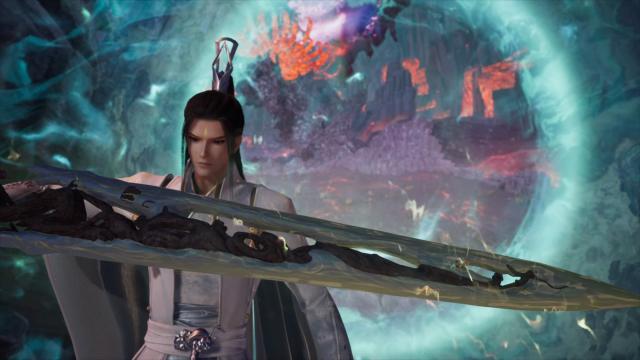
Though Together Forever is a strong game in every aspect, it's the story and characters that earn the highest praise. There's a bit of a John Connor/T-800 Terminator angle to the relationship between Yue Qingshu and Xiu Wu, who becomes the caretaker (and power source) of a deity trying its best to act human, yet lacks the proper context to do so. The tale of star-crossed lovers Bai Moqing and Sang Yo is equally compelling, as are their connections to the political strings binding the various narrative threads together. The underappreciated Tales of Berseria was in a similar boat back in 2016, and this is even more impressive.
The first thing every friend of mine mentions about Sword and Fairy is how beautiful the game looks; considering that these people are coming off the likes of Horizon: Forbidden West, Gran Turismo 7, and Elden Ring, it's the kind of complement that speaks for itself. Augmented by a crisp 60-FPS framerate (that somehow only buckles when it means the least), locations such as the Xianxia Sect and the Heaven Demon Kingdom are simply marvels to behold. Graphics are usually the least of my concerns, but when they look this good it's hard not to comment on them.
Together Forever's audio integrity is beyond reproach. The ambient soundtrack always makes its presence felt without overstepping its boundaries and taking center stage. Furthermore, every musical piece can be discovered somewhere in the overworld and listened to in the Glossary, saving trips to YouTube or Amazon. The voice acting is inspiring; it's a breath of fresh air to hear a game in a foreign language that isn't Japanese for once. I know I've had dozens of chances to mix it up over the years, I just hadn't thought about it until now. It can be hard to hear what's old until you experience something new.
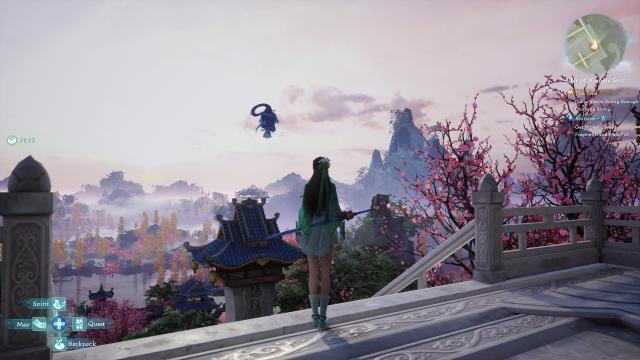
An action-RPG in the truest sense, Sword and Fairy doesn't stray far from its genre roots. But what it lacks in originality it more than makes up for with the synergy between its characters and various mechanics. Though there are only four party members, each has their role to play; this not only keeps the narrative focused, it forces the player to become acquainted with all the options available, instead of merely relying on what works.
Standard light/heavy attacks and combo strings form the basis of an attack plan, while particular chains trigger auxiliary effects such as knocking an enemy down or amplifying the next skill used. Join-Strikes are random QTE-like instances where teammates pair up for a united attack. Skills are essentially spells with the expected attacking/healing/buff/debuff applications and cooldowns. Dodging is used to evade enemy attacks (it's hard to accept, but you have to believe me) and comes with the wrinkle of 'Perfect Dodges', conferring additional bonuses upon successful activation. The upgrade paths of certain weapons assist in playing with these conventions, granting increased MP recovery at low HP values, or restoring health when a Perfect Dodge is performed. Cooking is even more efficient at this, temporarily swinging the party in one extreme or another (especially if you roll an 'Awesome!' meal). Finally, Arts of Sanity (a Devil Trigger-type buff) and powerful summon spells devastate the battlefield when their respective gauges are filled. Knowing what you can do is just as important as knowing when to do it.
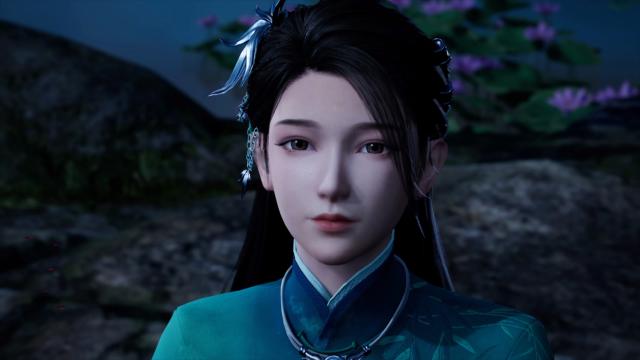
A combination of wushu sword-fighter and Summoner Yuna from Final Fantasy X, Yue Qingshu is the most dynamic, well-rounded member of Together Forever's cast. A 'Spirit Tuner', Yue is able to forge contracts with a number of spirits, granting their passive bonuses to the rest of the party. This gives her the most customizable skill set, allowing Yue to efficiently target enemy weaknesses and tweak builds around food and gear more accordingly. Staying versatile, yet selective is the key to victory with Yue.
As the only deity among humans, it should come as no surprise that Xiu Wu is the most powerful of the group. Armed with a series of telekinetic, ethereal swords, his gameplan never deviates from hitting things hard and it only becomes more ruthless over time. By the end, he'll be doing twice the amount of damage as everyone else while being the easiest to use. Xiu Wu is the Cidolfas Orlandu of Sword and Fairy: if players can manage to get him past the 90% mark of the main story, it becomes almost mathematically impossible to fail the rest.
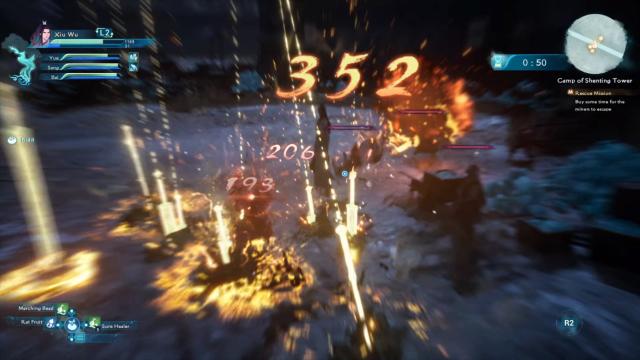
By far, the character with the most complex mechanics is Bai Moqing. A hybrid of Melia from Xenoblade Chronicles and the Sorceress from Diablo II, Bai uses a variety of spells to fight her opponents. Her elemental fields are where it really gets interesting, playing a complementary role when paired with similarly-aligned or 'friendly' magic; a thunder or water field can amplify wind spells, while an earth field strengthens fire, but earth spells require water or wind. It takes a little memorization and some time to set up, but if Bai starts to get comfortable during a battle, that's usually because it's about to end.
On all facets, who impressed me the most was Sang Yo. The affable, amiable rogue, 'Yo' defies the standard trappings of his archetype with a unique playstyle (which lacks thievery entirely) and unexpectedly strong character development. Utilizing a crossbow, as well as a number of status effect-inducing bugs, Yo has a 'friend's first' philosophy, healing allies while enfeebling enemies via debuffs and effective poisons. Also exclusive to Yo are a series of sneaking segments during the main quest that are more fun than they have any right to be. He still may not be my favorite, but Sang Yo is certainly Sword and Fairy's most developed, complete cast member.
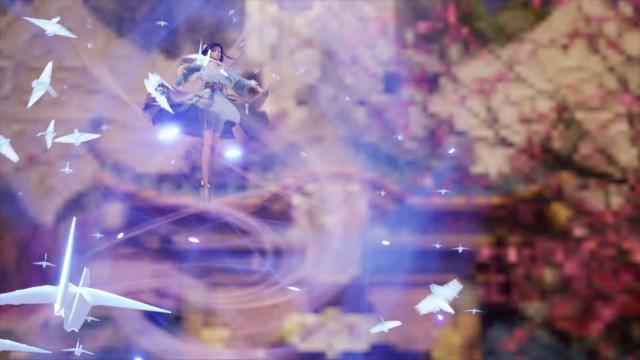
Outside of combat, Together Forever hosts a typical fare of supplementary content. Side missions are frequent, and though they follow the usual 'kill this enemy' or fetch quest formula, there are almost always secondary (or tertiary) layers that thicken it up slightly; an NPC in one town might have you gather items from two distinct locations, before meeting up with them somewhere else on the world map. It's not The Witcher III by any means, but the methods (as well as motivations) for exploring and helping others elevates Sword and Fairy over many of its contemporaries.
Worthy of note are a number of mini-games available to diversify the gameplay. It's all great stuff, I just wish there was more. This becomes a recurring theme throughout Together Forever, where I'm delegated to 'friend territory', even after formally requesting an intimate relationship.
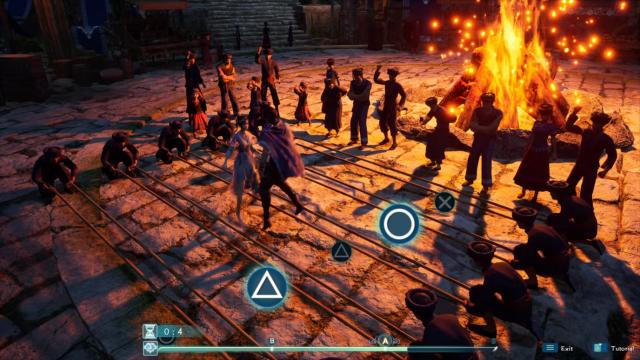
Most frequent is 'Leaf-Fairy-Jump' (I know, we'll get to that in a minute). Scattered throughout the realms are a number of challenges akin to a Mario game, where players ascend a series of rotating leaves towards the goal. Usually when JRPGs step outside their wheelhouses like this, it's a recipe for disaster; but similar to the sneaking portions involving Yo, it becomes a welcome change-of-pace because it's done so well. If EastAsiaSoft has a platforming game over here in the West, I'd be interested in trying it out.
The dancing sequence during the Festival of Quanyin Village is entertaining but fleeting, lasting only up until it's conquered. This sequence, where players hop across rows of clacking logs, is the most fun I've had with a rhythm game since Everhood. Sadly, after achieving the highest rank on my second attempt, that was apparently it. Every major town in the game could have one of these booths installed with a number of difficulty options, but instead all I'm left with are memories of what once was.
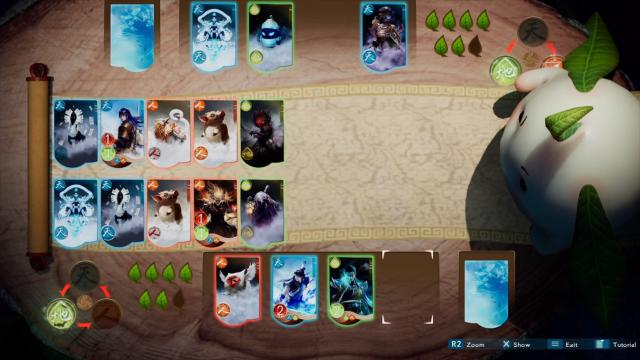
Last of all is 'Journey-Heaven-Earth'. A mix of the card game 'War', 'Rock, Paper, Scissors', and the slightest hint of Magic: The Gathering, Journey-Heaven-Earth is only held back by a limited card count and muddled translation of the ruleset. Players start by casting 'lower-class' cards that either match or trump each other based on a triangular system of priority (blue beats green, but loses to red, etc.); these generate mana used to play 'high-class' cards that can heal lost HP, damage the opponent, or a mix of both. The foundations of the game are excellent once you get the hang of it, but with limited deck possibilities and a small playerbase, one can only do so much. Granted, I didn't get all the cards and beat everyone, but like a dog hiding a bone in the backyard, I need to leave something for later.
For a series nobody in the West has ever heard of, Sword and Fairy's flaws are surprisingly minimal. Its main concern has been addressed with a number of pre- and post-release patches, to the point where the big problem now is that you simply don't want it to end. It's always better to leave them wanting more, but there's still room on this plate – and I'm a hungry man.
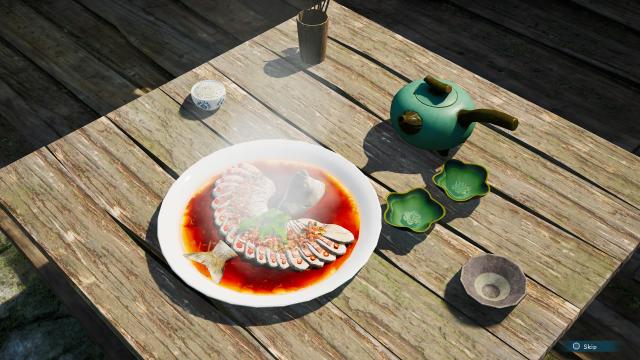
If names like 'Leaf-Fairy-Jump' weren't enough of a hint, an obstacle facing Together Forever is (or at least was) the localization issues that periodically show up throughout the game. Some of this has to do with the sheer amount of dialogue to be processed, but a more significant part comes from reducing a far more complex language into modern English – a herculean task. In the beginning, this occasionally caused some problems following the story or properly understanding instructions; about halfway through I had almost forgotten about it, and by the end it was barely noticeable. Though I admit that even after beating the game I still have no idea what my character's 'air intake accumulation' values are; I see no valves or gauges on any of these people, and unless there are two secret party members consisting of an engine manifold and a bong, there's still some road to pave. Just be ready for a few more 'This guy are sick' moments than you're used to in modern JRPGs.
Unfortunately, these instances can stand in the way of the increasingly complex puzzles towards the latter stages of the story. While light problem-solving establishes itself throughout the adventure, once players reach the Demon Realm it starts to up the ante considerably. This can be exacerbated by the translation, becoming a nuisance during a time when clear direction is needed most of all. Since every puzzle can be skipped, EastAsiaSoft was obviously aware of the issues here, but it sucks that this is the solution because they're unique and well-designed. The talent is there, it just needs to take accessibility into consideration if it wants to dance on the global stage.
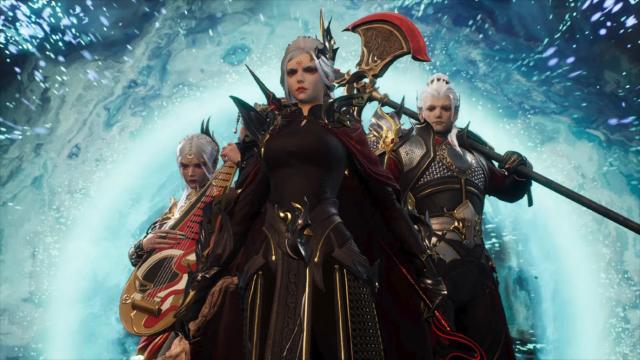
And honestly, from there I have to nitpick to find complaints, and what I come up with borders on pettiness. Having 'confirm' and 'jump' mapped to the same button becomes a minor inconvenience until you internalize their activation ranges. There's also a fair bit of repetition when it comes to certain spell animations; this is most common with Yue, but imagine if Firaga had the same animation as Fira and Fire, and you'll have an idea where I'm coming from. There's enough variety to go around, but you'll become quite familiar with a few select spells.
When I compare Sword and Fairy: Together Forever to the heavy-hitting JRPGs of the 8th generation such as Persona 5, Final Fantasy XV, Tales of Beseria, and Xenoblade Chronicles 2, not only is the outcome favorable, it can flat out surpass them at will: wonderful characters, an excellent story, great combat, an awesome soundtrack, fun mini-games, and a healthy amount of side content. What you're left with is simply a great game. Aside from a few translation woes and possible hang-ups concerning puzzles (which have workarounds), my bittersweet complaint is that it's already over. Like bacon wrapped around a tenderloin, if some DLC could fatten the experience up by a solid 10-20 hours, this will definitely be one of the games I'll talk about in December. Together Forever might not get my vote for Game of the Year, but it's definitely my favorite game I've played this year. If Xenoblade Chronicles 3 is out of reach, or you need something to play on PS5 to last until September, I can suggest a direction to go in.
Just follow all the socks; I know I have to put them on my Christmas list.









